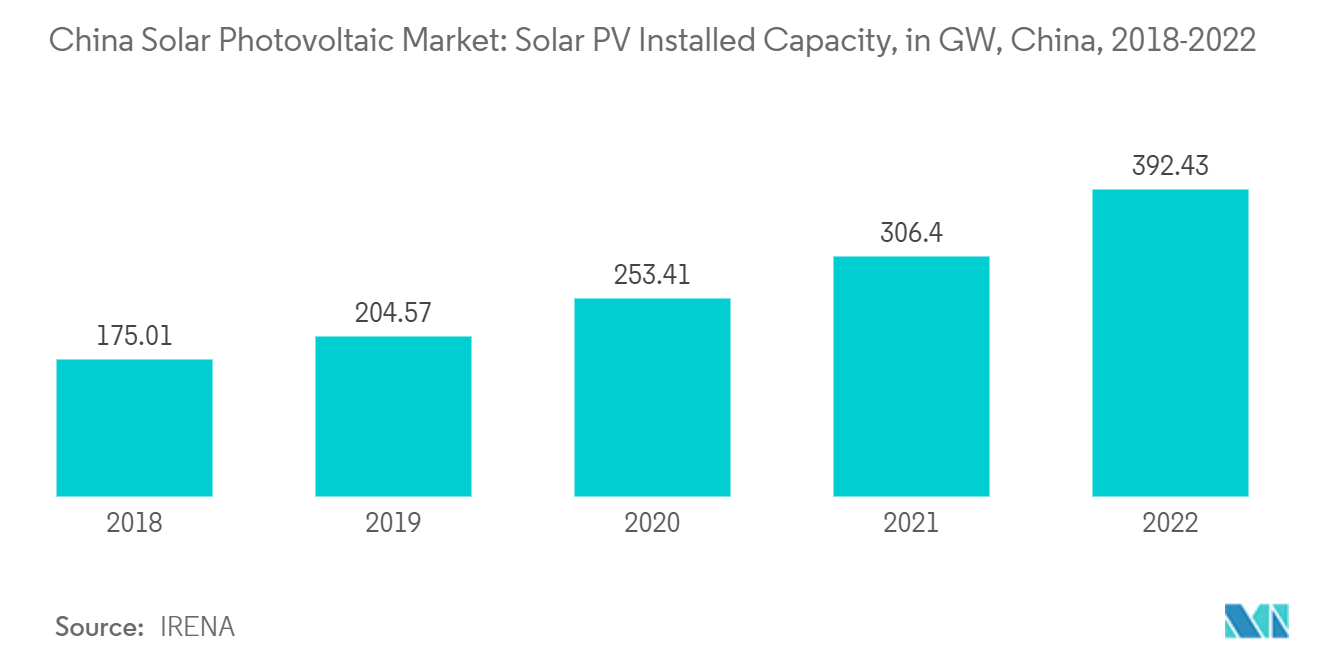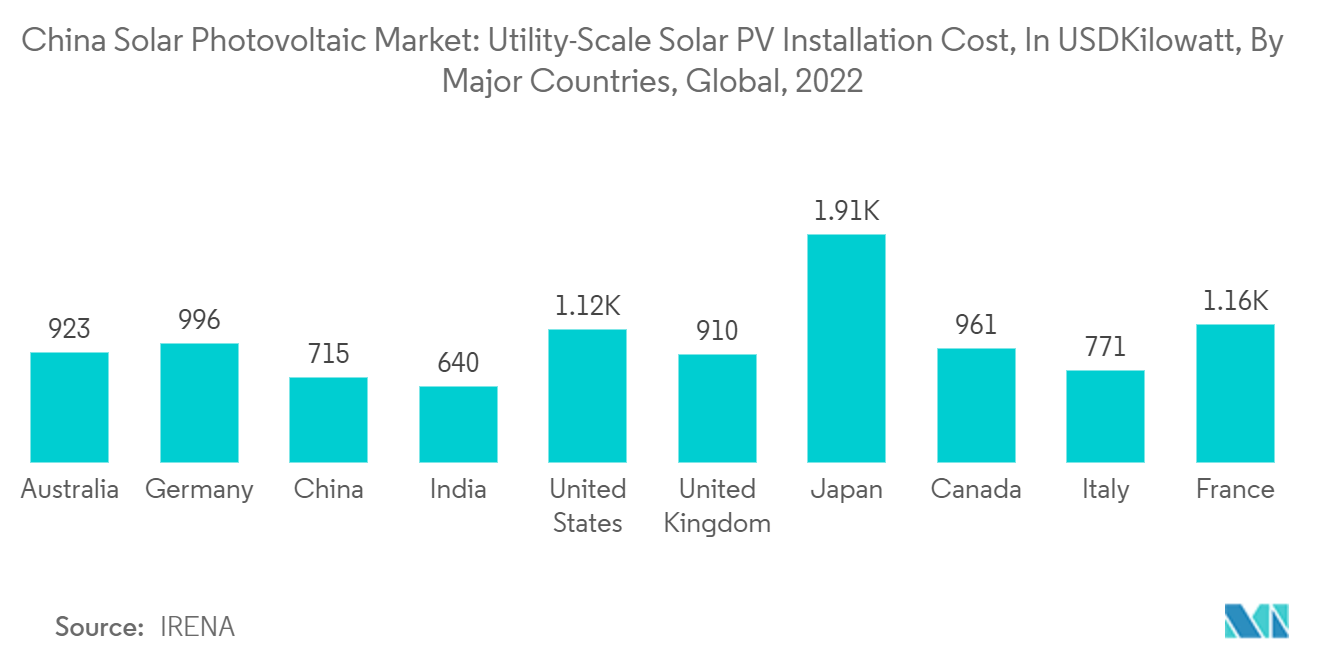Market Trends of China Solar Photovoltaic Industry
Ground Mounted to Dominate the Market
- Ground-mounted solar PV systems are designed to capture sunlight and convert it into electricity. Unlike rooftop solar panels, which are installed on the roofs of buildings, ground-mounted systems are placed on the ground, either fixed in place or equipped with tracking systems to follow the sun's path throughout the day.
- Ground-mounted solar for commercial or utility projects is economical, owing to the economies of scale, number of installations, and operation and maintenance efficiencies. On the other hand, rooftop solar is used in small residential projects, less than 1 MW. Increasing competition and technical advancements in large-scale utility projects have led to cost reductions in both installation, operation, and maintenance prices.
- The ground-mounted solar PV installation has witnessed significant growth in installed capacity in recent years, mainly due to increased investments and favorable government policies for ground-mounted utility-scale solar PV projects.
- In March 2022, the Chinese government announced plans to build 450 GW of solar and wind power generation capacity in the Gobi desert and other desert regions, with the construction of nearly 100 GW of solar power capacity already under construction.
- According to the International Renewable Energy Agency (IRENA), China's installed solar PV capacity was around 392.43 GW in 2022, up from 306.4 GW in 2021, recording a growth of around 28% in the year. The growth is the result of rapid deployments of rooftop PV installations in the country.
- Additionally, China is also expected to witness significant growth in utility-scale ground-mounted solar PV systems during the forecast period. The country’s total solar capacity is expected to reach 500 GW by the end of 2023 and 1 TW by the end of 2026.
- Increasing competition and technical advancements in large-scale utility projects have led to cost reductions in both installation and operation & maintenance prices.

Supportive Government Policies to Drive the Market
- China is the largest solar energy market globally, and the country is expected to retain the top position during the forecast period. The National Development Reform Committee (NDRC) announced China's 14th Five-Year Plan on renewable energy in June 2022 following the release of China's 14th FYP on the overall energy sector during 2021-2025. Along with capacity targets and general guidelines, the plan also includes plant-level details and measures to support renewable energy consumption, which are essential to its implementation.
- The national government target indicates the doubling of renewable generation by 2025 from the 2020 level, but provincial targets and project pipeline dynamics suggest an aggressive deployment pace. The provincial renewables targets for wind and solar power added to 1,263 GW by 2025, which, if all projects are commissioned on time, will result in China meeting its 2030 Nationally Determined Contribution (NDC) target five years earlier.
- Solar energy is an integral part of China’s renewable energy strategy. As a manufacturing hub of solar equipment, the country has been rapidly adding solar capacity across all end-user segments. As per the China Photovoltaic Industry Association (CPIA), in 2022, the new solar PV installed capacity reached over 87 GW, while the cumulative installed capacity of solar was 393 GW in the same year.
- As per the National Development and Reform Commission (NDRC) of China, a solar capacity of 1200 GW is expected to become active by 2030. This indicates massive development of solar energy projects in the country, which would likely drive the solar photovoltaic market in the forecast period.
- Further, China has one of the lowest total installed costs and LCOE of utility-scale solar PV globally, which has also been a major factor in driving demand in the region. According to IRENA, as of 2022, The global weighted average LCOE of utility-scale PV plants declined by 89% between 2010 and 2022 from USD 0.445/kWh to USD 0.049/kWh. This estimate also represents a 3% year-on-year decline from 2021. The cost of utility-scale solar stood at 715 USD/kW in China, which is much less compared to many other countries. Additionally, from 2010 to 2022, total installed costs fell by nearly 89%. Such low costs have enabled developers to establish larger utility-scale solar farms. This trend is expected to continue during the forecast period and drive the demand for solar PV in the country.
- Overall, with the ambitious solar energy targets and government plans to develop localized manufacturing hubs for equipment and components are expected to witness significant growth of the solar PV market in the country.


